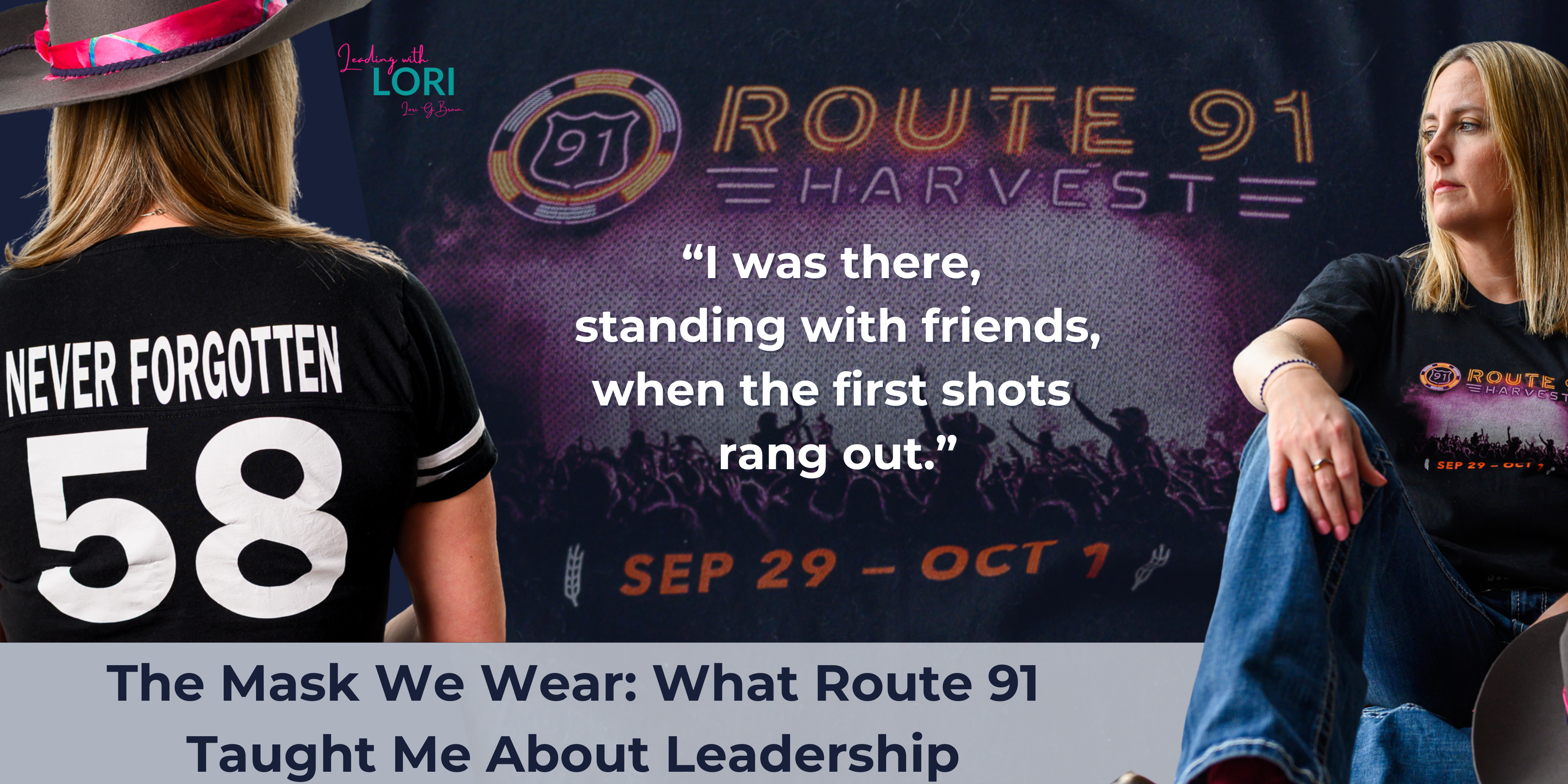360-Degree Wake-Up Call: The Feedback That Changed Everything
Now that I’ve established that I’m doing this blog thing, let me start by sharing a little about myself and how I came to be where I am today....
3 min read
.png) Lori G. Brown
:
October 1, 2025 at 8:15 AM
Lori G. Brown
:
October 1, 2025 at 8:15 AM

One Step at a Time
Today marks eight years since the Route 91 Harvest Festival mass shooting in Las Vegas. The deadliest mass shooting in US history.
On this anniversary, I pause to send a prayer for every one of the 22,000 people who were there that night. For the families of the 58 who lost their lives on October 1, 2017. And for the two others who later died from their injuries. The ripple of loss is wider than most will ever know.
Eight years sounds like a long time, but for those of us who lived it—or lost someone—it can still feel like yesterday.
I was there, standing with friends, when the first shots rang out. At first, we thought it was fireworks. I even muttered, “What asshole is lighting off fireworks in this big of a crowd?”.png?width=345&height=289&name=Blog%20Post%20Feature%20Image%20-%20Route%2091%20(12).png)
Seconds later, Jason Aldean dropped his guitar and ran off stage. The exit lights came on. And suddenly, the night turned from music into chaos.
As we ran, bullets were flying. I remember scanning the landscape and breaking survival down into steps: Get to that stop sign. Make it over that wall. Hide behind this cement fence, just for a minute, to catch our breath.
My first thought was to call my husband. My second thought was to call work. That realization—that my instinct was to prioritize my job before my extended family—was a wake-up call that would echo for years.
Wearing the Mask
The shooting was on a Sunday. I flew home on Monday. On Tuesday, I was on another plane to Spokane, where I gave a talk at a luncheon.
 Do I remember what I said? Not at all. But I know I stood up there, put one foot in front of the other, and wore the mask of “business as usual.”
Do I remember what I said? Not at all. But I know I stood up there, put one foot in front of the other, and wore the mask of “business as usual.”
Everyone in my group of six survivors processed it differently. Some of them took a leave of absence from work. Others went back to work like I did. Same event. Different responses. That was the beginning of a leadership lesson I carry with me to this day.
Looking back, I wish I had given myself permission to pause. But at the time, I thought powering through was the only option. That moment taught me that resilience and avoidance can look the same on the surface—and leaders need to know the difference.
What It Taught Me About Leadership
Trauma does not wear a uniform. It does not have a timeline. It does not look the same on everyone.
I showed up at work, so people assumed I was “ok.” I was not. And the truth is, no one really knew what to say or do.
Over time, I learned three lessons:
I was reminded of this years later, sitting in a sales training, when the facilitator played a video of himself firing an AR-15 at some old timeclocks in the woods. The sound of rapid gunfire sent me right back to that night in Vegas. I left the room, hid in a bathroom stall, and sobbed for what felt like forever. No one around me knew that I was carrying that weight until it spilled over.
The Leader’s Role
Here’s the thing: as leaders, we cannot always predict what will trigger someone. But we can do three things:
Because sometimes what people need most is not a solution—it’s simply to be seen and believed.
Finding Light
Eight years later, the anniversary still pulls me back. But over time, it has become something more than remembrance.
Each year, I return to Vegas alone. I spend one day fully unplugged—eight hours in a spa with nothing but a notebook. I reflect on the year behind me and plan for the year ahead.
It started as a way to process trauma. It has evolved into a ritual of renewal. In many ways, it has become my most sacred leadership retreat.
Leaders spend so much time pouring into others. This practice became my way of filling my own cup, so I could keep showing up with clarity and purpose. (That practice deserves its own blog, which I will share soon.)
What I know is this: healing is not a straight line. It is more like a song—sometimes steady, sometimes broken by silence, sometimes unexpectedly beautiful in its return. And like music, it can carry us even when words cannot.
Closing Reflection.png?width=409&height=343&name=Blog%20Post%20Feature%20Image%20-%20Route%2091%20(13).png)
We never know what the person sitting next to us in a meeting might be carrying. But we can choose to lead in a way that honors the unseen.
Because sometimes, survival—whether in a crisis or simply in daily life—comes down to one simple act: taking the next step.
Gratefully, 
.png)
Now that I’ve established that I’m doing this blog thing, let me start by sharing a little about myself and how I came to be where I am today....
.png)
There I was—newly minted CEO of PayNW—when Mike Anderson, our founder and sole board member at the time, sat me down and said, “I’d like you to write...
.png)
Picking up where we left off (See the last post), I had just learned a hard truth: technical knowledge alone doesn’t cut it. So, what did I do? I...